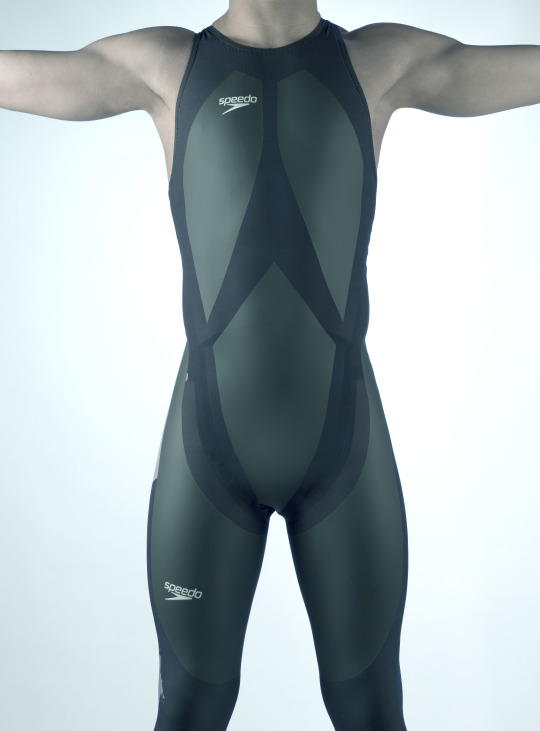#WeightLifting
Explore tagged Tumblr posts
Text
Li Wenwen, knowing she has secured the Gold medal, carries her coach onto the stage to celebrate instead of attempting her final lift.
2K notes
·
View notes
Text
Athletes Go for the Gold with NASA Spinoffs
NASA technology tends to find its way into the sporting world more often than you’d expect. Fitness is important to the space program because astronauts must undergo the extreme g-forces of getting into space and endure the long-term effects of weightlessness on the human body. The agency’s engineering expertise also means that items like shoes and swimsuits can be improved with NASA know-how.
As the 2024 Olympics are in full swing in Paris, here are some of the many NASA-derived technologies that have helped competitive athletes train for the games and made sure they’re properly equipped to win.

The LZR Racer reduces skin friction drag by covering more skin than traditional swimsuits. Multiple pieces of the water-resistant and extremely lightweight LZR Pulse fabric connect at ultrasonically welded seams and incorporate extremely low-profile zippers to keep viscous drag to a minimum.
Swimsuits That Don’t Drag
When the swimsuit manufacturer Speedo wanted its LZR Racer suit to have as little drag as possible, the company turned to the experts at Langley Research Center to test its materials and design. The end result was that the new suit reduced drag by 24 percent compared to the prior generation of Speedo racing suit and broke 13 world records in 2008. While the original LZR Racer is no longer used in competition due to the advantage it gave wearers, its legacy lives on in derivatives still produced to this day.

Trilion Quality Systems worked with NASA’s Glenn Research Center to adapt existing stereo photogrammetry software to work with high-speed cameras. Now the company sells the package widely, and it is used to analyze stress and strain in everything from knee implants to running shoes and more.
High-Speed Cameras for High-Speed Shoes
After space shuttle Columbia, investigators needed to see how materials reacted during recreation tests with high-speed cameras, which involved working with industry to create a system that could analyze footage filmed at 30,000 frames per second. Engineers at Adidas used this system to analyze the behavior of Olympic marathoners' feet as they hit the ground and adjusted the design of the company’s high-performance footwear based on these observations.

Martial artist Barry French holds an Impax Body Shield while former European middle-weight kickboxing champion Daryl Tyler delivers an explosive jump side kick; the force of the impact is registered precisely and shown on the display panel of the electronic box French is wearing on his belt.
One-Thousandth-of-an-Inch Punch
In the 1980s, Olympic martial artists needed a way to measure the impact of their strikes to improve training for competition. Impulse Technology reached out to Glenn Research Center to create the Impax sensor, an ultra-thin film sensor which creates a small amount of voltage when struck. The more force applied, the more voltage it generates, enabling a computerized display to show how powerful a punch or kick was.

Astronaut Sunita Williams poses while using the Interim Resistive Exercise Device on the ISS. The cylinders at the base of each side house the SpiraFlex FlexPacks that inventor Paul Francis honed under NASA contracts. They would go on to power the Bowflex Revolution and other commercial exercise equipment.
Weight Training Without the Weight
Astronauts spending long periods of time in space needed a way to maintain muscle mass without the effect of gravity, but lifting free weights doesn’t work when you’re practically weightless. An exercise machine that uses elastic resistance to provide the same benefits as weightlifting went to the space station in the year 2000. That resistance technology was commercialized into the Bowflex Revolution home exercise equipment shortly afterwards.
Want to learn more about technologies made for space and used on Earth? Check out NASA Spinoff to find products and services that wouldn’t exist without space exploration.
Make sure to follow us on Tumblr for your regular dose of space!
2K notes
·
View notes
Text



Don't fuck with her, she's got the power of God AND anime on her side WWRRRAAARRRGGHGHHH
(This is Mari Sanchez, Colombian weightlifter and winner of the Olympic silver medal in the women's 71kg division! In these pictures, she's successfully lifting 145kg🤯)
#olympics#olympics 2024#2024 olympics#paris 2024#paris olympics#mari sanchez#weightlifting#women's sports#vine#anime#funny#meme#throwback#one piece#luffy
2K notes
·
View notes
Text
if you think about it, Alfred Pennyworth has the ultimate sleeper build. yes sometimes he huffs and puffs while dragging Bruce’s unconscious body around, but that man is still dragging like 225-245 lbs of dead weight on his own. that’s insane. Alfred has been training entirely on real-world tasks and activities to maintain Batfamily-adequate strength well into his older years. he’s probably ripped and lean as hell under the suits. no wonder we never see him shirtless. dude would be flexing that vascularity on everyone.
#treadmill thoughts#batman#bruce wayne#dc#alfred pennyworth#batfamily#weightlifting#Diana recognizes game when she sees it ok#that’s why she was wining and dining (enjoying tea) with Alfred in ZSJL#she knows
512 notes
·
View notes
Text











Torajiro
#Torajiro#sailors#weightlifting#smoking#squirrels#bath#elephants#drinking#whales#bears#idyll#painting
5K notes
·
View notes
Text
#Sebastián Grísnik#Sebastian Grisnik#bodybuilding#muscle#bodybuilder#fitness#gym#workout#strength#motivation#fit#physique#training#strong#gains#shredded#weightlifting#goals#aesthetic#beastmode
2K notes
·
View notes
Text
Lord I've seen what you've done for others
362 notes
·
View notes
Text
💪Ryder Steele’s Muscle Gain Instruction Manual. 💪
A surface-level yet comprehensive beginner’s guide to working out/body building/gaining muscle written by a tboy with a degree in human physiology, with tboys in mind. Speed training, toning, and cardio/lung health training will not be explored.
(Part 1) Diet. Talking about food, their molecules and how the body responds.
An aspect of bodybuilding/exercizing that is just as important as the weights and workouts themselves. Generally, the more a human does, the more nutrition they need in every sense.
Protein is needed to survive as a human, 0.8 grams per kilogram of weight MINIMUM. (source) To gain muscle you need to consume more protein than that. 1 gram per pound of body is a good goal.
There are additional ingredients, Amino Acids, you can ingest to give your body more of what it needs to build muscle. The most common is creatine, and it can be found naturally in foods or bought alone. 14mg per pound is a good dose, (source) but you could do as low as you like.
Carbohydrates, fats, vitamins, minerals, and water are other things essential to keep you running, but aren’t the building block of muscle.
For vitamins, minerals, and water be sure to get the daily recommended dose. It’s worth considering a little more than recommend water, potassium, magnesium, and sodium in your diet for adequate muscle usage before and during working out. Also, a bit more calcium in general for muscle movement and the strength your bones must gain to support stronger muscles and weight loads.
For carbohydrates and fats, it’s important to have adequate levels of these. The body uses carbohydrates for energy first and mainly, then uses fats, then proteins. How much? Well it depends on how much you care about the image of your body, and what your goals are.
The Bulk is for people who want to gain muscle and mass a bit quicker. There is clean bulking and dirty bulking. Dirty bulking is eating a lot without much regard to amounts. Clean bulking is to gain muscle mass while keeping your body fat percentage at relatively the same level.
The Cut is for people who want to reduce their body fat percentage. Eating at a slight/moderate deficit to force the body to consume fat cells as energy. High protein is still consumed.
Before working out, you should consume something 30-40 minutes before starting. Preworkout, a caffeinated substance, or complex carbohydrates to give you the energy needed to begin and not crash.
After working out, you should consume a good portion of your daily proteins 30 minutes to four hours later.
(Part 2)Working out. Utilizing and ripping the telomeres of your muscles and forming neural pathways.
To build muscle, you need to utilize the muscles. To get bigger muscles, your body needs to move with more resistance than what it normally does. Weight acts as the resistance.
Warming up is an important first step to working out, as you need to prime your body’s systems and cells. Heart rate is the primary thing to warm up, because using muscles required your heart pump harder and faster. 5-10 minutes of warmup minimum of cardio is best. The intensity of this cardio is your choice. Dancing, fast walking, jogging/running, jump rope, cycling, etc. are good. Stretching is also a good precursor to the warmup as the warmup uses your muscles also. It’s a process, but its important to warm up properly to avoid tightness, cramps, or even things snapping.
The weightlifting a complicated and highly discussed thing. There are hundreds of motions across gym machines, tools, and muscles for you to chose from. Which ones you do depend on what is available, and the muscles you want to work. Write stuff down if you must. Here is an exercise dictionary.
Muscle names are good to know to decide which motions to do. Look at this diagram to learn, and build your own encyclopedia and routine.
Frequency of working out is important. If your body does not use muscles, they deteriorate. You can work certain muscles more frequently than others. Just keep adequate rest. You may see things like push/pull day, arm day. This is the type of motions and muscles focused. Dedicating a workout session/day to one muscle group helps keep track of avoiding overuse. See Rest for more. Once a week at minimum you should work a muscle group to keep it from deteriorating. Here’s an example: Sunday rest. Monday arms&core. Tuesday whole back. Wednesday rest. Thursday whole arms. Friday rest. Saturday whole legs.
Duration of working the muscle during a session/day impacts its growth. A rep is one time going through a motion. Sets is how many times you do a group of reps. 3x15 pushups is I’m doing 15 pushups. Rest. 15 more. Rest. 15 more. Three sets of fifteen. To build endourance, lower weight at higher reps. To build mass and strength, higher weight at lower reps.
Finally, the weight heaviness. You should slightly push your muscles to start, then base your weight patterns off of what is a good amount of strain for you. The more you challenge/strain yourself, the more it will hurt and build muscle mass. Also, the faster you increase the weight your muscles fight against, the higher the risk of injury. However, if you stick to a weight that is not challenging, your muscles will not grow. There must always be some element of challenge your muscles must always be chasing to keep up with. Thats what growing is. For example: I’ve been bicep curling single dumbbells of 10 pounds for months. 12 pounds is a comfortable challenge, and I can do 15 also but not the whole set. So, I may warm up with 1 set of 10lbs. Two sets of 12lbs, then finish with one set of 15 at lower reps. The number of reps per set could be 15,12,10,6. Decreasing reps while increasing weight to prep the body, but not injure too much.
(Part 3) Rest. Your body building new muscle, and preparing to work again.
In between sets of exercise, you need to rest your muscles for enough time for them to become reloaded with their energy, ATP. ~1 minute for heavily lifting. Ensure you’re breathing well also to give your blood oxygen. Deeper, healthy breaths during rest is good.
After training it’s recommended to give a muscle group ~48 hours of rest to rebuild the fibers. Rest means not training it, but of course if you need to use them, use them. Additionally, you can still be active and rest, doing a thing called active rest. Doing nothing at all, which has its benefits, is called passive rest.
Sleep is your body’s way of storing information and taking out the cerebral trash. During sleep your body produces growth hormone, your brain works to retain all of the information you and your body learned during the day, and generally refreshes itself. Napping can be beneficial also if it doesn't interfere with getting the minimum 8-10 hours depending on your age group.
Thank you for reading! If you have any questions, would like help creating workout plans, or would like a bit of praise or encouragement feel free to reach out. Also if there are any errors. Now go have fun!
#androphilia#autoandrophilia#forcemasc#forced masculinization#weightlifting#body building#finally here!
460 notes
·
View notes
Text

#photography#chris bumstead#cbum#bodybuilding#weightlifting#fitness#workout#gym#gymlife#midnightdrafts
187 notes
·
View notes
Text

#health and fitness#gym motivation#gymlife#gym#bodybuilders#strength training#workoutmotivation#bodybuilding#fitnessjourney#weightlifting
208 notes
·
View notes
Text


Rescue: HI-Surf / 1.06, "Drift" (2024)
#for science#rescue hi surf#kekoa kekumano#adam demos#laka hanohano#will ready#weights#weightlifting#excersise#lifeguards#mancandykings#rescue: hi surf#rescue: hi-surf#otheredit#mine
207 notes
·
View notes
Text

#animated gif#animated gifs#gif#gifs#old advertisements#old ads#retro#vhs#LA people#wiggle wiggle wiggle#dancerobics#short shorts#weightlifting#los angeles#80s
100 notes
·
View notes
Text
my dearly-held self-insert thing for the Batfamily is they’re highly trained gymnasts, athletes, fighters, etc etc, but even they despair when Bruce makes them do weighted Bulgarian Split Squats and I STAND by this
#I have seen grown men reduced to tears by this exercise#because it isolates every muscle in one leg#there’s no rest or ‘bottom’ to the exercise really#just pain#and weighted????#my heart has never worked harder#harder than running even#batman#bruce wayne#dc#batfamily#weightlifting#anyway yeah that’s my self insert#not that everything else I write isn’t a little bit in other ways but
459 notes
·
View notes
Text
"HRT is like yelling, after years of whispering to yourself"
98 notes
·
View notes
